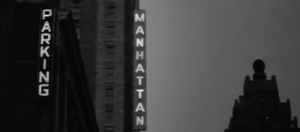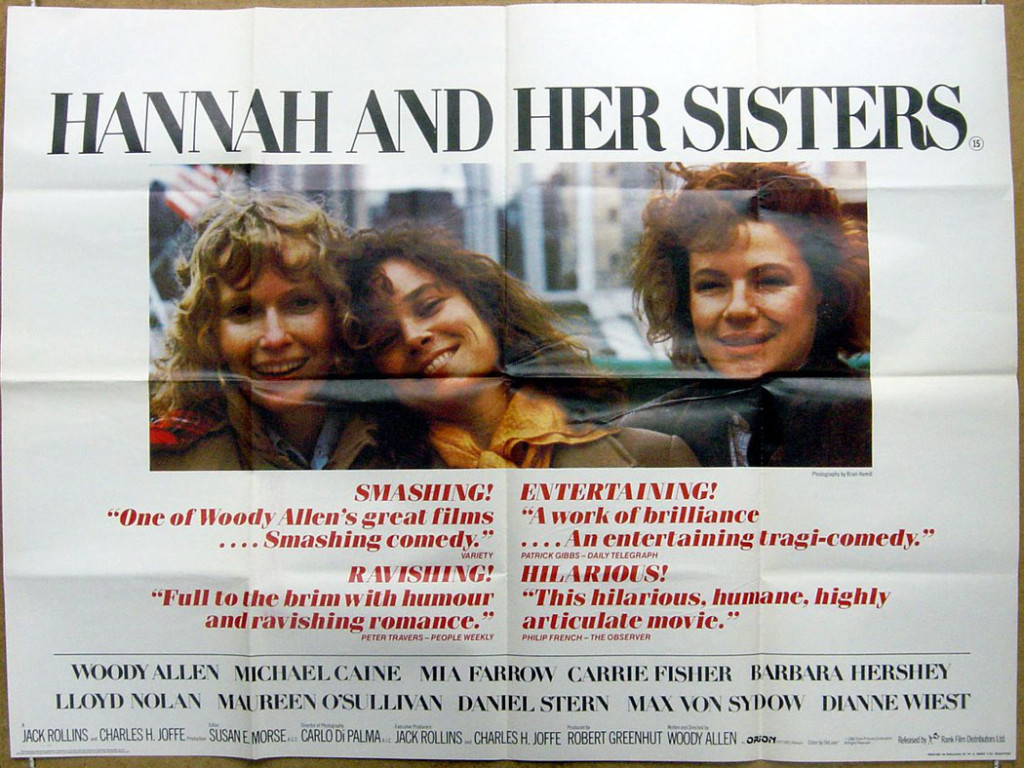Perhaps you already know or even practice this Japanese art form, but it was new to me: I thought Benshi was that lovable dog. A friend said no, it’s those tiny trees, isn’t it?
Benshi sees a spoken word performer standing by a cinema screen: he or she performs a piece while it shows a film. It began as a verbal equivalent of the caption cards you would get in silent movies but it expanded. Benshi performers apparently began describing the action in between the captions then over years began to basically talk about anything they liked.
I have really severe twitching problems with taking someone’s film and using it as stock footage behind my words. I know and I feel the work that went into making any film so just taking it feels like when you’re in school and they get you to make a loathsome time-wasting, busy-work collage and you pretend you’ve created something.
Then I’ve been a critic plus I’ve been on the receiving end of professional critics, I am sometimes hyper conscious of the line between creation and criticism, art and journalism. I get mithered over criticising a film because how dare I take a feature film, reduce it to 400 words and diss it?
But then if I can save you from ever seeing Johnny Mnemonic, then I’ve genuinely given something back to the community. I’ve taken one for the team so you don’t have to.
All of which swirls around my head like I don’t have enough to think about – and I’d like to say that all of which evaporated when Chris Swann asked if I’d like to do a Benshi as part of the Flatpack Film Festival here in Birmingham.
It sort of evaporated. It also sort of coalesced more: I thought maybe this was a way to actually explore what I fret about in all this. Plus, let’s be open here, it was the Flatpack Film Festival and I was very chuffed to be asked to contribute to that. Normally you have to, you know, make a film first.
I had, I think, seven weeks in which to come up with a short five-minute spot and you should’ve seen the work I went through. Nobody saw me, most especially not the audience at the event, because it all went wrong. At one point in the plotting I had assembled a rough cut of ten film clips, each movie with subtitles because I’d decided to do something about the intertextuality of media and because I don’t know what that means, I reckoned having some text on screen would cover it. I actually re-did some of the subtitles so that the films would be commenting back to me as I spoke.
I went off down the deepest rabbit hole to do with writing and text and what we read versus what we see. One tiny point was based around Star Wars: how many billions of people have seen that and believe it’s set in the future? Even though the very first frame is text saying “A long time ago, in a galaxy far, far away…”. But then Star Wars came out in 1977 and it was beaten to the Best Oscar for that year by Annie Hall – and rightly so, Annie Hall is much better. Only, Annie Hall has that famous subtitled scene.
Diane Keaton and Woody Allen are talking while the subtitles reveal what they’re really thinking as they try to impress each other. It’s simple, funny, clever and I don’t feel you can watch it now without the third layer of Woody Allen’s real-life relationships imposing. Not to dodge the issue but, well, yes, to dodge the issue with a quick summary, he lives with his adopted daughter.
Seven weeks of actual anguish over this and then with two days to go, I abandoned it all.
I realised that ten films, all with subtitles, some with altered subtitles where I’d have to precisely time my words to get the responses cued correctly, all with jokes in, some with serious stories, some with this thing where I want to prove that you read text but don’t register it, it was just a mess. It was a barrage of audio and video and if any one part of it worked, you’d never know because another three would drown it out.
I kept just one thought. This business of Woody Allen’s life: how, I feel, what we know and what we learn colours what we see and what we think. If you’re going to examine this business of how our reactions to a movie alter over time then Annie Hall is great because, for instance, I believe Diane Keaton spoke out defending Allen during the messiest times of his breakup from Mia Farrow.
However, there is also Manhattan.
Manhattan famously begins with a voiceover narration from one of its characters as we see utterly beautiful black and white photography of New York City and we hear George Gershwin’s Rhapsody in Blue. Sweeping, soaring, inexpressibly wonderful music.
I can’t talk over that music. I can’t talk over someone’s film.
I can’t half talk about New York City, though.
So that’s what I did. I clipped the opening minutes of Manhattan and the Flatpack people muted it while I spoke about how this city has meant so much to me and always has, even before I’d visited. Then on my cue I shut up and they snap-faded the music up on a crescendo.
If I could do it again, I’d take longer: I read my piece too quickly. But after the anguish of trying to talk about movies, getting instead to pour it all out about New York City and do so in front of 40 people at the Flatpack Film Festival – to do so with a brevity I’ve not needed since writing Ceefax – I had a time.
Here’s my very short script and it’s followed by a YouTube clip of the real opening to Manhattan.
—
OVER OPENING OF “MANHATTAN”
“New York was his town. And it always would be.”
Wait. That’s actually what the film is saying right now. It’s a voiceover in Woody Allen’s Manhattan. That is a stark and beautiful film that in 1979 was… interesting for how it had Allen as a 40-year-old man in a relationship with a schoolgirl.
There you go. Now in 2015, knowing about Allen’s real-life relationship with his adopted daughter, every one of you just went eww.
The film hasn’t changed. We have. What we know changes what we think.
But films are also of their day and they tie us to that time. They tie us to how we felt when we first saw them.
I feel this. With Manhattan and every other film, every other TV show about New York, they formed me. New York is my favourite place in the world and it was so before I even went there. Because of film.
The monochrome beauty of Manhattan, the verve of West Side Story. The charm of Breakfast at Tiffany’s. The colourful autumnal beauty of Hannah and Her Sisters – at one time my favourite movie of all. The meh of Die Hard with a Vengeance. The happy, peppy, perky New York of the TV show Fame. The cruel, cold, miserable New York of the film Fame.
I can’t justify what they did to me, I can’t explain it or understand it.
But when I step out onto those streets, I am taller. I’m also more English somehow. New York women hear my accent and say honey, you must be real smart.
New York men see New York women and sometimes think I’m a threat. Imagine that.
New York men and women. New York life. The smashing together of cultures. It’s what I like, it’s what I am.
New York is my town. And it always was.

